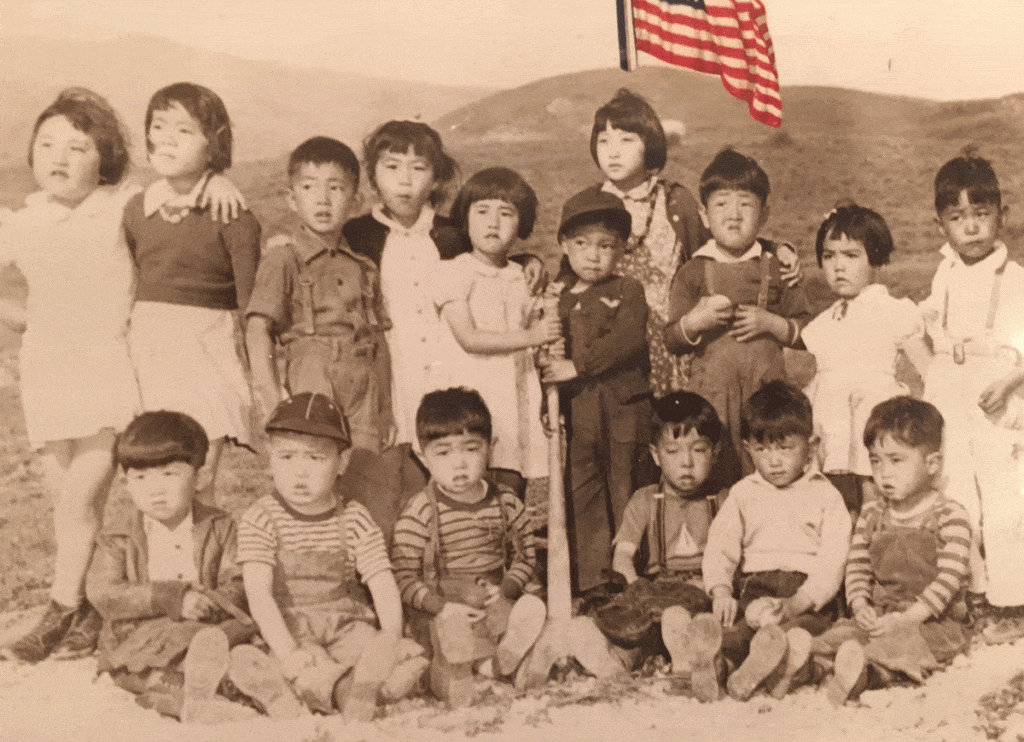Shortly after Pearl Harbor, on February 19, 1942, President Franklin D. Roosevelt uprooted the lives of 110,000 Japanese Americans. His executive order authorized their relocation inland from the West Coast, despite a government report that concluded “There is no Japanese problem” and that they were loyal citizens. The order allowed for “voluntary” relocation for a short period before mandatory relocation by force.
Fred Isamu Wada – who ran a profitable produce business in Oakland – realized leaving as soon as possible would give his family more freedom in the long run. His wife was from Ogden, so he looked to Utah for a new home. His and 14 other families formed a farming cooperative, to show support for the war effort and avoid relocation to an internment camp.
Wada, 35, scouted the Duschesne area but, despite a warm welcome, he settled on Keetley due to its proximity to rail lines. He negotiated with the local mayor and landowner, George Fisher and signed a four-year lease at $7,500 a year for about 3,500 rocky acres and some buildings, including an apartment house.
Locals did not take news of the Keetley Japanese Relocation Farm favorably. In a letter to Governor Maw, the Park City mayor and city council, and the Wasatch County sheriff, some locals requested the Japanese be kept away. Their request did not prevail, as Fisher had earlier checked with the U.S. Attorney to verify such a transaction was legal.
With government relocation and travel permits in hand, the group left Oakland around March 28, two days before the “volunteer” window closed and forced relocation became the policy. They traveled in 29 vehicles, caravanning to Keetley in three days. Like many other Japanese Americans, they were never able to recover the homes and possessions they had to abandon.

Credit: Courtesy of Howard Yamamoto and Tessaku
Shortly after the group arrived in early April, someone in a passing car threw a stick of dynamite toward the farm buildings. Local miners were the suspects, and another blast followed, but eventually things settled down as the newcomers proved their worth in an area experiencing a labor shortage.
By moving quickly, Wada spared his followers a forced move to the harsher lands of Utah’s West Desert, near Delta. The arrangement also benefited Fisher, whose land would get improved. When the snow melted, Wada learned just how rocky the leased land was. “Hell,” he said, “we had to move 50 tons of rocks to clear 150 acres to farm.”
Throughout the war the families in Keetley grew vegetables and raised chickens, pigs, goats, beef and dairy cattle. They sold their goods to Safeway, ran a farm stand, and sent food to the Topaz internment camp. They cleared another 1,000 acres to bring in hay, and built new structures. Some of the men hired out during the week to work on farms in Spanish Fork, Orem, and Heber.
At a macro level, about 5,000 of the 110,000 Japanese Americans affected by Roosevelt’s order had the resources to move before forced relocations began. Accounts vary but at the micro level, there were 124 to 140 people at the farm in Keetley. Of that group, more than 50 were under 20 years old, with more than 25 under the age of 10. When the harvest came in, everyone from 10-year-olds to elders joined the work in the fields.

Credit: Courtesy of Howard Yamamoto and Tessaku
A four-year-old at the time, Howard Yamamoto later recalled, “I don’t remember that much, the hardship. But the parents, my God. Could I do it? No. I couldn’t do it. I can’t imagine myself doing it.”
When the war ended, they brought in the last harvest and closed the farm. About one-third of the group remained in Utah, the rest returning to California. Jordanelle Reservoir, constructed by the Bureau of Reclamation, inundated the farm in 1995, but the rising waters did not wash the stain on our nation’s history.
The Park City Museum is currently hosting a traveling exhibit on Japanese incarceration during WWII titled “For All the World to See.” The Museum is currently open Friday through Sunday from 11 a.m. to 5 p.m. Please check our website www.parkcityhistory.org for more details.
For more information about Japanese internment, visit https://www.tessaku.com/ or https://densho.org/.